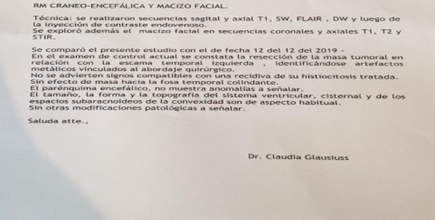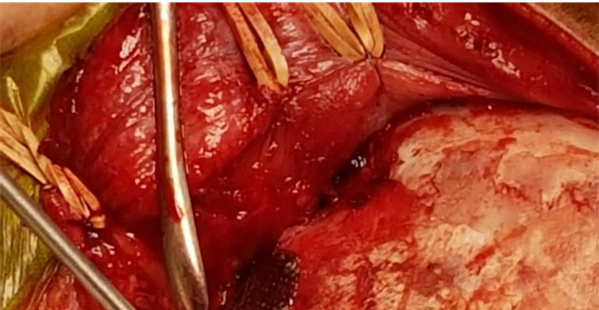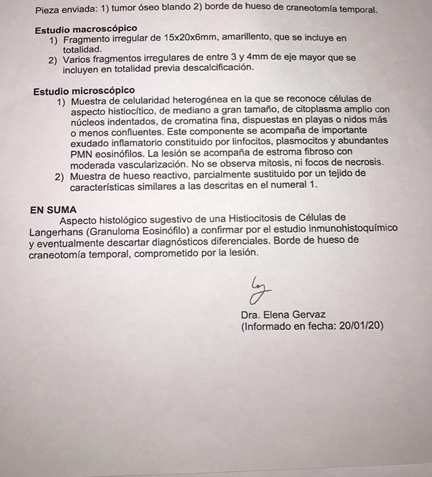Journal of
eISSN: 2373-4345


Clinical Images Volume 13 Issue 4
Oral and maxillofacial Surgeon, University of Eastern Republic of Uruguay
Correspondence: Felipe Kornecki Radzinski, Dentist, Oral and maxillofacial Surgeon, University of Eastern Republic of Uruguay
Received: August 12, 2022 | Published: October 18, 2022
Citation: Radzinski FK. Surgical management of craniofacial Langerhans cell histiocytosis. J Dent Health Oral Disord Ther. 2022;13(4):83-85. DOI: 10.15406/jdhodt.2022.13.00578
They can migrate to distant areas, like cornea, central nervous system, etc.1,2
Classification of the Langherans cells histiocytosis:
Background
The pathology of Langherans cells in children is surveyed in the skull of base.
A 3 years old boy attended in the Oral and maxillofacial service and in the Neurosurgical service, in Montevideo - Uruguay in 2020. He concured with a tumor in the left preauricular region that appeared and disappeared spontaneously, and is sensitive to the position. The patient was biopsied and a diagnosis of, unifocal Langherans cell histiocytosis was reached. He was operated with general anesthesia by 2 surgical teams. A shave of the temporal region was first performed. A hemi coronal flap is made, its dissected by planes and bone plane is reached. There a pathological cavity was found that was curetted until it reached the hard point. It was covered with a semicircular titanium mesh with screws that were fixed to healthy bone. Hemostasis was achieved, wound dressing was performed and closed by planes.
The evolution was favorable and a post operative follow up was carried out until the surgical discharge. The pathological study confirms the diagnosis of previous biopsy of unifocal histiocytosis. The patient is until the moment under treatment with chemotherapy.

Figure 3 Magnetic Resonance.
In the current control examination, the resection of the tumor mass in relation to the temporal squama is verified; identifying metallic artifacts related to the surgical approach, there are no signs consistent with a recurrence of treated histiocytosis.

Figure 8 Placement of the titanium mesh in a semicircular shape to protect the hard tissue and give support to the soft tissues

Figure 11 Pathological Anatomy.
Histological appearance of a Langherahns cell histiocytosis confirmed by immuno histochemical study and eventually ruled out by differential diagnosis.Temporal craniotomy bone edge compromised by the lesion. Histological appearance suggestive of Langherans Cell Histiocytosis, eosinophil granulometry
Langherhans cell histiocytosis is a disorder with local or diffuse organ infiltration. It can cause different clinical syndomes.3 Most cases affect children. Manifestations may include pulmonary infiltates, bone lesions. Rashes, etc. Diagnosis is based in a biopsy, the prognosis goes hand with ion disemination, particulary from the hematopoyetic system , the liver, the spleen or a combination of both. The child evolved favorably from the surgical procedure and entered an oncological chemotherapy until the present moment. There is no evidence of recurrence or persistence of the lesion.
None.
The author declares no conflicts of interest.

©2022 Radzinski. This is an open access article distributed under the terms of the, which permits unrestricted use, distribution, and build upon your work non-commercially.